Walk. Jog. Lope. Most of us know about these gaits, but did you know there are three more variations in between? They are extended western gaits and definitely different. Riding instructor Amy Andresen of Cedar Hill, Texas, explains all six gaits and how to do them well.
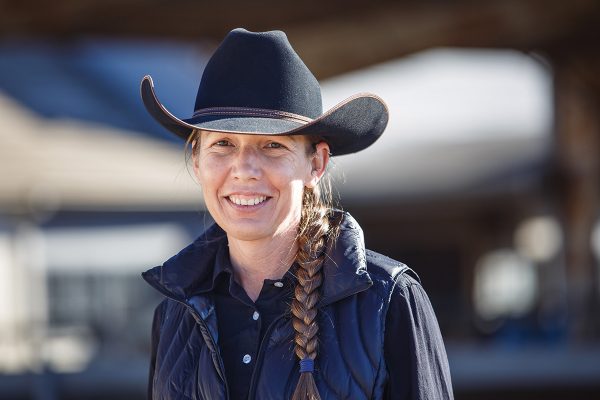
If you plan to compete in events such as ranch riding, horsemanship or trail, you’ll be asked to show your horse at any and all of these gaits. Outside the show pen, being able to move into the extended western gaits as well as the basic three have practical purposes.
“On the ranch, you’ve got to get things done,” Amy says. “We extend the walk and jog a lot, because we want to get to where we need to be on the ranch and get it done.”
Walk
The walk is a four-beat gait where each foot hits the ground at a separate time. It’s the slowest of the horse’s gaits. In classes such as ranch riding, Amy says this is called a “normal” walk.
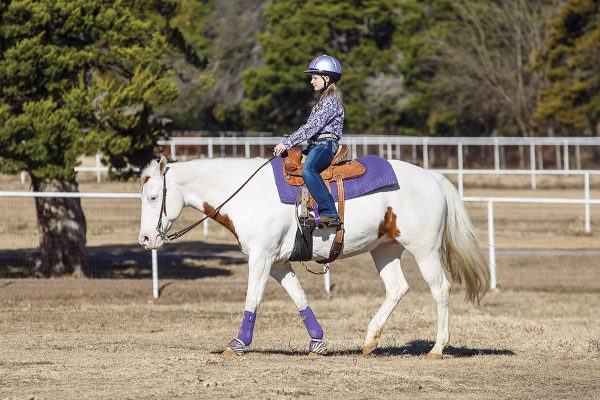
“At a normal walk, you’re feeling that four-beat rhythm, and if you’re relaxed, you’ll have that rhythm in your seat,” Amy says.
Extended Walk
In ranch riding, you’ll be asked for an extended walk. The difference in the extended gait is that your horse is reaching farther with his legs.
“It’s a little faster, but we’re not looking for a rushing, speedy, fast walk,” Amy says. “It’s the same beat, but not as slow. He’s not dragging his toes; he’s picking up his feet and reaching farther—more of a marching kind of pace.”
To move up from a normal walk, Amy says you’ll add a bit of pressure with your legs and your seat.
“Going from sitting relaxed to a driving seat, you’re going to push more with each seat bone,” she says. “As you feel your right hip go forward, push a little bit with your right seat bone. When you feel your left hip move forward, push with your left seat bone.”
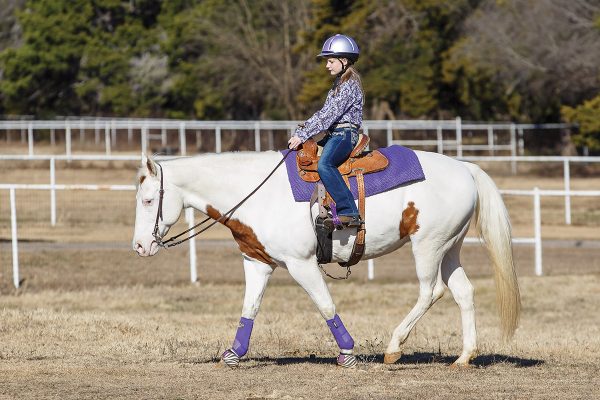
Do the same with your calves and lower legs: as you feel the horse’s belly come out and touch your right leg, use that leg to press it back, alternating leg pressure. This asks the horse to extend without changing gaits.
You’ll also want to shift your position forward, especially in the show pen.
“Specifically in ranch riding, the judge wants to see a change in the horse going from the slower gait to the extended one,” Amy says. “Not a drastic change—just a slight tipping of your upper body forward to match the horse’s momentum.”
Jog
The jog, or trot for English riding, is faster and bouncier than a walk, and it’s a two-beat gait.
“In a trot, the horse’s feet hit the ground two feet at a time in diagonal pairs, which is what makes it bouncy,” Amy says.
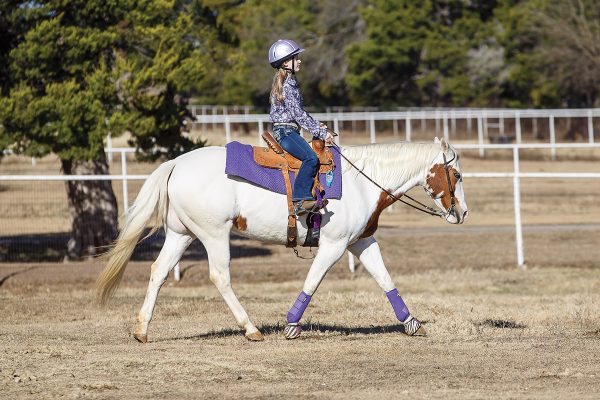
In western classes, you’ll sit the jog, making sure to help the horse stay in a slow rhythm by finding the side-to-side quality of the jog, letting your hips drop side to side.
Extended Jog
When moving from a jog to an extended jog, you’re changing the speed of your two-beat jog but keeping the same two-beat, diagonal-pair footfall pattern. Just like the extended walk, you want your horse moving forward, picking his feet up and reaching farther in this extended western gait.
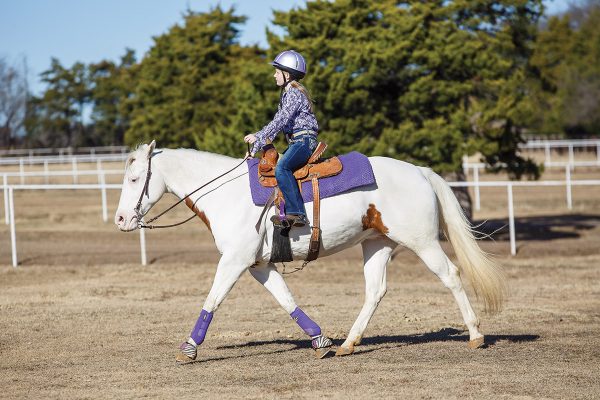
“In ranch classes, when they ask for an extended jog, they want to see the horse speed up and flatten out as he reaches farther with his feet,” Amy says. “Not a slow turtle trot. A marching trot.”
To ask your horse to extend the jog, cluck and use both legs to ask him to move forward.
In ranch riding classes, you will either move into a slightly forward position or start posting. In other western judged events, stick to sitting the jog, sitting deeper and driving with your seat bones.
Lope
The lope, or canter for English riding, is a three-beat gait with one hind foot landing on the ground, followed by a diagonal pair of two, and then the other front foot.
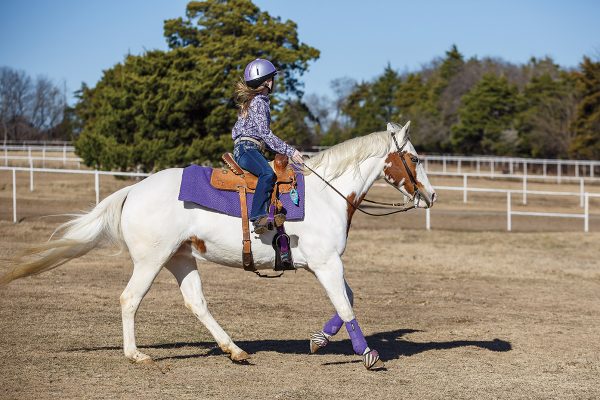
“This makes the gait have more of a rocking kind of feel,” Amy says.
Extended Lope
The extended lope has the same three-beat rhythm as the lope, but faster, with longer, reaching strides.
“The judge does want to see the horse pick up speed, but it’s still that lope—three beats,” says Amy. (A gallop is four beats.)
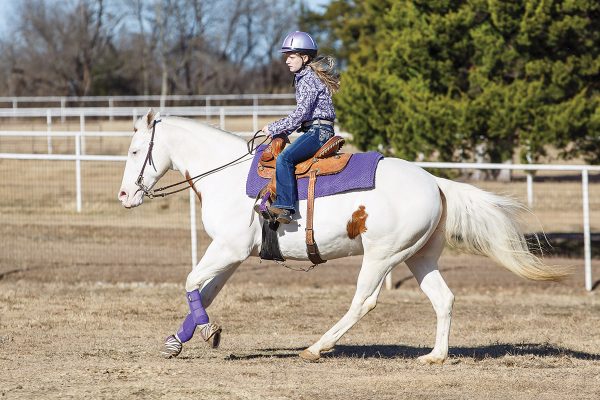
To extend the lope, cluck or kiss, and use both your legs.
Feel the Difference
How can you tell when your horse has extended his stride, and not just sped up? You’ll know if your seat is relaxed in the saddle.
“You’ll feel more of your hip rising and dropping because your horse is raising his leg and extending farther,” Amy says. “You’ll feel it in your seat, and you’ll have more motion in the saddle. Your rhythm will also get a little bit faster.”
Avoid rushing your horse; you don’t want to lose your rhythm or break into another gait. Concentrate on keeping your horse between your reins and your legs, and you’ll be on your way to great extended strides.
“You want the same frame as the regular gaits, but not on a tight rein—driving from behind, coming back down to the bridle, and relaxed—always relaxed,” Amy says.
This article about extended western gaits appeared in the Fall 2021 issue of Young Rider magazine. Click here to subscribe!


